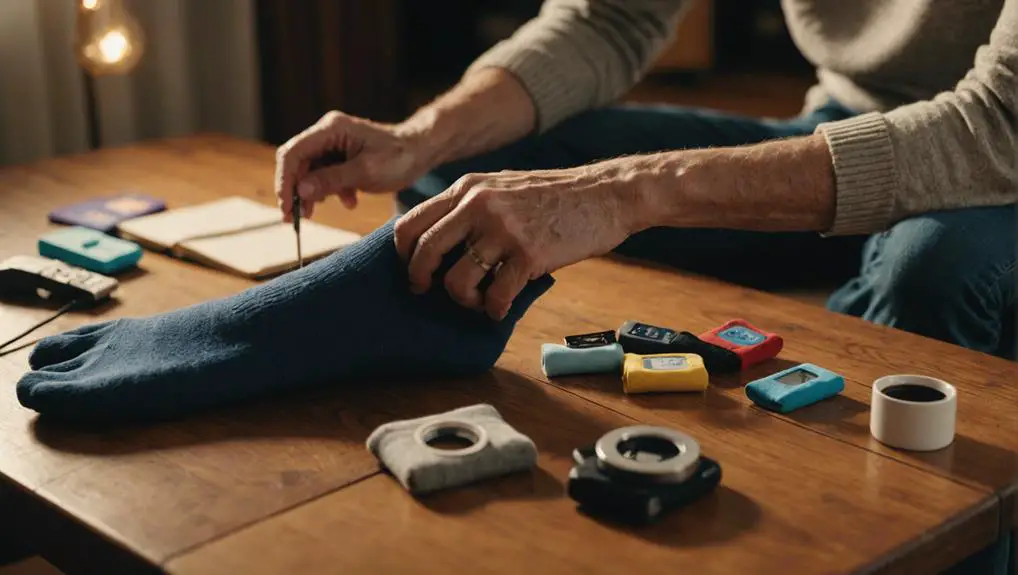Parkinson’s is a disease caused by the death of dopamine cells in a person’s body. When major symptoms appear, 60 to 80% of these essential cells are lost. Almost one in five hundred people have Parkinson’s, making it a very common disease.

This condition is most likely to be developed by a male rather than a female. Most patients show symptoms of Parkinson’s after the age of 50.
Here is a related article that might interest you on the Best 6 Computer Games And Apps For Parkinson’s Patients in 2024.
Table of Contents
How Do You Care For Parkinson’s Patients At Home? Symptoms
Some common symptoms of Parkinson’s include:
- Depression.
- Apathy.
- Dementia.
- Fatigue.
Scientists are researching to determine the early symptoms of Parkinson’s. Some things in consideration are impaired sense of smell, specific sleep disorders, constipation, and more than usual fatigue.
Possible Treatment of Parkinson’s Disease
Despite being a common disease, science has failed to determine its exact cause. However, it has some connections with genetics and the environment.
The best drug to help Parkinson’s patients was discovered in 1967. Researchers from around the world are striving to find its causes, early symptoms, and suitable cure. There are some medications that help people with Parkinson’s disease. However, it is important that the patient always see medical help and consultancy first.
Medication
Doctors prescribe various medicines to people suffering from Parkinson’s to minimize their tremors and movement issues. Each of the medicines has its short- and long-term effects, making them not suitable for everyone. The three main commonly used medicines are:
- Levodopa
- Monoamine Oxidase-B inhibitors
- Dopamine agonists.
Is Surgery an Option?
Although most Parkinson’s patients are given relief medication, sometimes a surgery known as deep brain stimulation is used. The con of this surgical procedure is that it cannot be done on everyone. In case the patients are looking for a surgery option then it is important that they seek the help of experts in this scenario. A general medical practitioner cannot help them in this regard.
Guide For Taking Care Of Parkinson’s Patients At Home
People suffering from Parkison’s are mostly old people who already have underlying problems. A caregiver will be needed to provide proper support and help to your loved one suffering from Parkinson’s.
Your caregiver can be a family member or a person you have hired. Some important ways the caregiver can provide proper support and help to the Parkinson’s patient are listed ahead:
- Grooming
Take proper care of their hygiene. Provide them with an electric toothbrush as an alternative if they have problems using their hands with a traditional toothbrush.
For shaving, use an electric shaver that isn’t hard on the skin. Apply lotion to keep their skin moisturized. It is also important to take care of the skin and look out for symptoms that may cause irritation or allergy.
- Bathing
Avoid using bathtubs as they can be dangerous; instead, use a showerhead to give them regular baths. Please ensure the patient sits on a stool or a seat to stabilize and minimize their physical movement.
There have been some cases where Parkinsons ’caused dandruff in patients; in that case, use as little shampoo as possible. Dry them off yourselves with a soft towel.
- Dressing Up
Make sure your clothing is simple, such as wearing jeans with elastic waistbands, hook-and-eye bras, and tube socks rather than dress socks. Avoid wearing pantyhose and over-the-head clothing. Replace any buttons on favorite garments with Velcro. Rubber-soled shoes should be avoided. They might lead to tripping.
Keep the clothing simple. Set out their clothes in the order they want to put them on in advance. Provide dressing aids like long-handled shoehorns or buttonhooks. Let them do as much of their dressing as you can. Please encourage them to get comfortable and dress on the most affected side.
- Eating
Serve fiber-rich foods, such as whole grains, bran cereals, fruits, and vegetables, to avoid constipation, a common symptom of Parkinson’s disease.
Add fiber gradually if they are used to a low-fiber diet. To prevent osteoporosis, provide a calcium-rich diet at least thrice daily. As fracture-causing falls are more probable in those with Parkinson’s, this is of particular concern. Dairy products like cheese, milk with vitamin D added, and yogurt is healthy options.
Levodopa is best absorbed when taken on an empty stomach for Parkinson’s disease. Its absorption may be decreased by protein.
Proteins should be served every 3–4 hours after the patient takes their medication. Fix moist, soft foods if they have problems swallowing. Avoid meals like crackers that are prone to crumble. Give them drinks such as protein shakes that are nutritious and easy to swallow.
- Activities
Their symptoms shouldn’t deter you from engaging in activities. Tools that have been specially adapted to assist with tasks like handling a paintbrush are available. Their occupational therapist may also provide recommendations.
Visit a performance or listen to music instead of some pastimes, like playing an instrument, which becomes too challenging. To lessen stress, which might exacerbate symptoms, engage in calming activities.
Tremors may be reduced by relaxing music and guided imagery. Books, CDs, and DVDs can all be used to teach guided imagery.
Please encourage them to exercise their face, jaw, and mouth in addition to the recommended daily activity from their doctor.
Sing, read aloud while making expressive facial expressions, or both. For both of you, the practical daily caring responsibilities might be challenging.
Complementary And Alternative Therapies
Some Parkinson’s disease patients report that alternative therapies improve their quality of life
The symptoms of Parkinson’s disease are said to be lessened by a variety of complementary therapy.
However, no scientific proof exists that they successfully reduce Parkinson’s disease symptoms. The majority of people believe complementary therapies are completely safe. Some, however, can be hazardous and should not be used in place of the medications that your doctor has given.
St. John’s wort is one herbal remedy that can interact unpredictably with some Parkinson’s disease medications. Consult your care team if you are considering combining your prescribed medicines with alternative therapy.
Conclusion
Elderly people usually seek help because of their age. And if an elderly is suffering from Parkinson’s then things get a little tough for them.
It is important to care for such patients at home because these people need grooming and care more than anyone else.
We have given some easy tips to comfort such patients. In case of any extreme emergency, do not forget to consult the doctor.

Hi, my name is Eddie, I am a professional trainer specializing in the elderly population and I’m also a website designer. I love training in the gym, going to the beach, traveling, and having good food.
I combined my love for sport and website designing to make “DisabilitEase” whose purpose is to help elderly and disabled people live a more full and active life, have more fun, and enjoy their unique journey despite any disability.


